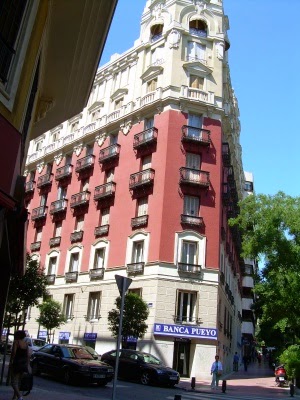On this day, St. Josemaria celebrated Mass and for the first time left the Most holy Sacrament in a Tabernacle of the Work at the Ferraz st. residence.
“At last! Jesus is coming to live with us. <Et omnia bona pariter cum eo> and all good things will come with him," the priest joyfully announced in a letter dated March 30, to Jose Maria Barredo.
St. Josemaria chose the best room: a room relatively big, with the entry close to the main vestibule, and with exit to a patio, also big and quiet. Initially they only had a table and a bench, which was given to a carpenter to make two stools. They also had a kneeler. The tabernacle was made of hardwood and it was borrowed from a nun - Mother Muratori - who had a good friendship with St. Josemaria. They obtained an altar with a portable altar stone, and for an altarpiece, a painting of the supper at Emmaus. The tabernacle, altar cloths, and candlesticks came as gifts or loan.
On March 31, in an oratory full of young men, Father Josemaría celebrated Mass in a white chasuble. The altar was adorned with flowers; rows of candles of graded length sloped up toward the crucifix above the tabernacle. Before giving Communion, Father Josemaría spoke a few words of thanks to the new "Resident." Afterward he wrote to the vicar general, "Holy Mass has been celebrated in the oratory of this house, and His Divine Majesty has remained with us in the Blessed Sacrament, at last fulfilling the desires we have had for so many years (since 1928!).
During that year the apostolic work grew significantly. St. Josemaria used to go with the 'Saint Raphael' boys to do visits to the poor. Little by little the house acquired more things which were chosen and put with good taste. When (don) Pedro Casciaro came for the first time, he had a good impression. In the vestibule “It wasn’t a cold and disorganised place -the vestibule of a house of a middle-class family, more like modest, but with very good taste, and above all, very clean”. (See more: http://opusdei.org.sg/en-sg/article/opus-deis-first-tabernacle/)
During that year the apostolic work grew significantly. St. Josemaria used to go with the 'Saint Raphael' boys to do visits to the poor. Little by little the house acquired more things which were chosen and put with good taste. When (don) Pedro Casciaro came for the first time, he had a good impression. In the vestibule “It wasn’t a cold and disorganised place -the vestibule of a house of a middle-class family, more like modest, but with very good taste, and above all, very clean”. (See more: http://opusdei.org.sg/en-sg/article/opus-deis-first-tabernacle/)
St. Josemaria's room didn’t have more light than what came through a window open to a narrow internal patio and a wardrobe where the liturgical ornaments were kept. It was here where St. Josemaria started using, for a while, the shoes thrown away by the residents (as they couldn't afford to buy their own).
The founder's formal request to the bishop of Madrid-Alcala for permission to set up a semipublic oratory is dated March 13, 1935. Because of the location of the house, inspection of the room set aside for liturgical worship was the responsibility of the pastor of the parish of San Marcos. On March 27, 1935, he declared the oratory to be "in suitable condition and duly provided with all that is necessary for the liturgy" and then proceeded to give his blessing, "leaving the place ready for the celebration of Mass" (see "Relación del parroco de San Marcos," 27 Mar 1935, in the archive of the general secretariat of the archdiocese of Madrid-Alcala, "Oratorios, 1931-1936"). The decree authorizing the setting up of the oratory is dated 10 Apr 1935; original in AGP, RHF, Sec. Juridica 1/8066.































